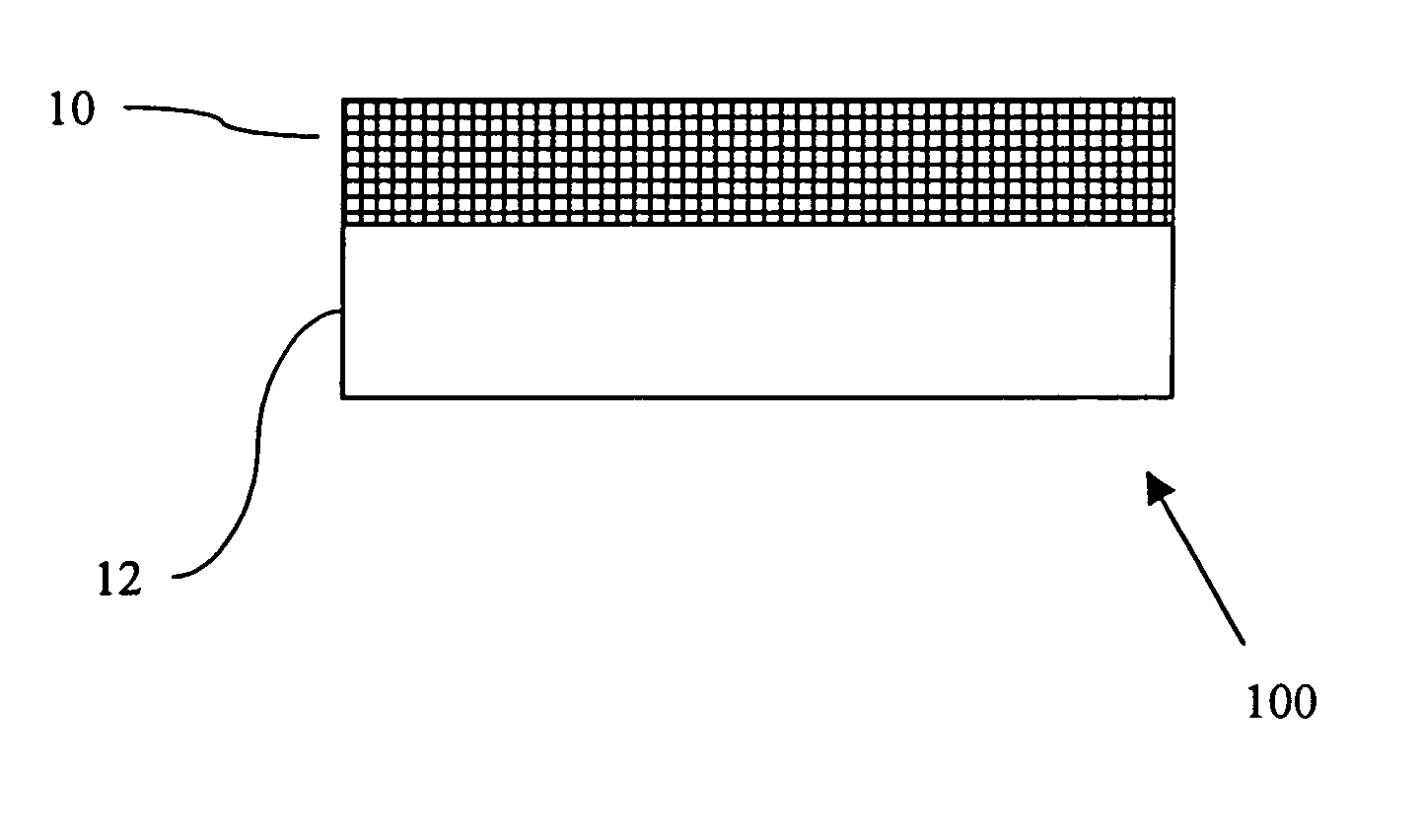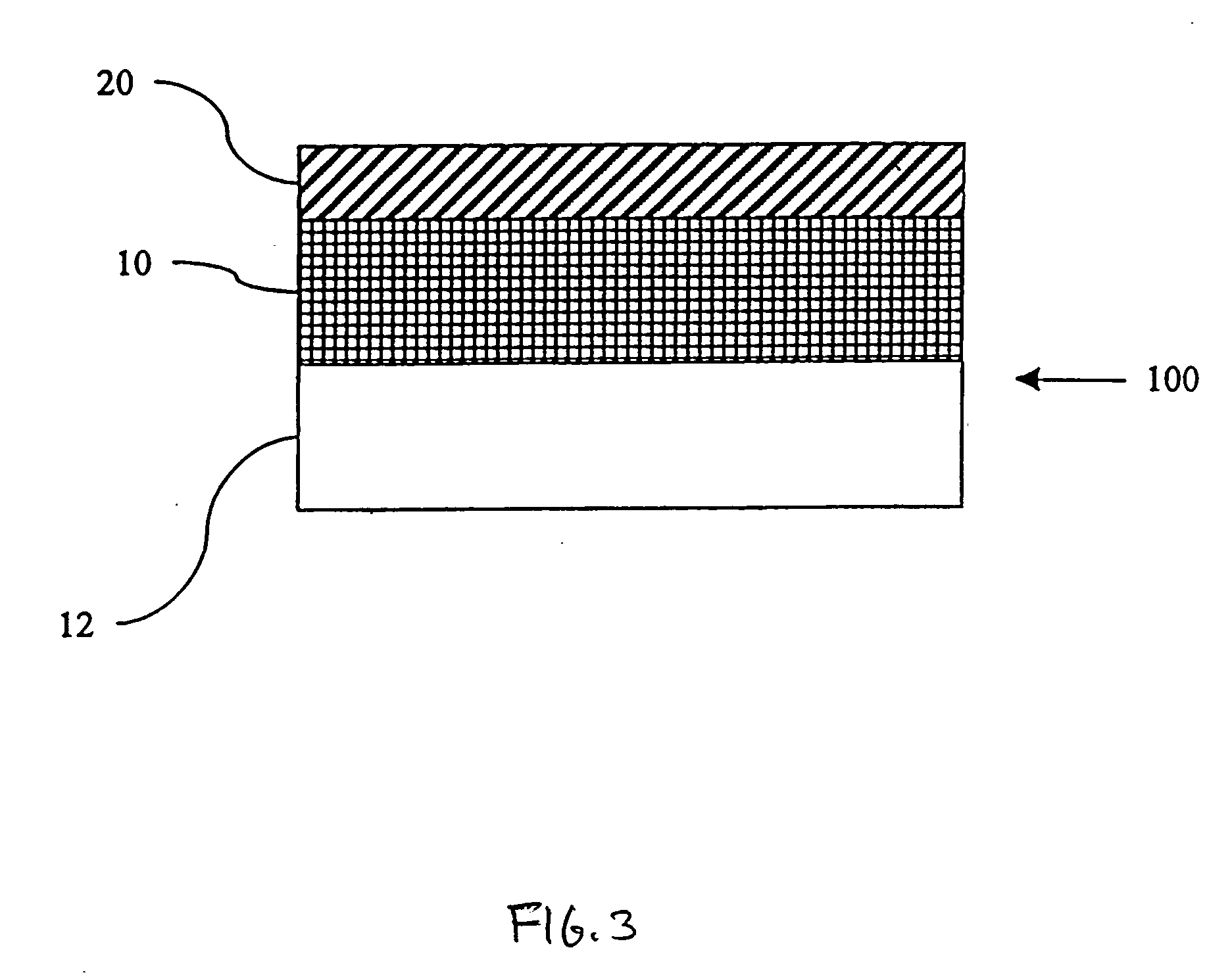Metallic structures incorporating bioactive materials and methods for creating the same
a bioactive material and metal structure technology, applied in the field of implantable medical devices, can solve the problems of a lumen almost never long-term solution, a tendency to re-narrow or “restenose”, and it is difficult to predict the degradation kinetics of polymers
- Summary
- Abstract
- Description
- Claims
- Application Information
AI Technical Summary
Benefits of technology
Problems solved by technology
Method used
Image
Examples
example i
[0102] Six bioactive composite structures were formed. Each bioactive composite structure comprised a nickel-phosphorous metallic matrix formed on a metallic substrate using an electroless deposition process. The substrates used were foils. Three substrates comprised medical grade 316 L stainless steel and three substrates comprised nitinol. fluorouracil, tetracycline, and albumin were respectively co-deposited with the nickel-phosphorous on the stainless steel and nitinol substrates.
[0103] Each substrate was first prepared using process steps show in FIG. 4. First, the surface of the substrate is cleaned (step 32). Then, the substrate surface is rinsed with distilled water (step 34). After rinsing, the surface of a substrate is sensitized with Sn(II) (step 36). A solution of 0.1 g / L of stannous chloride may be used as a sensitizing solution. After depositing Sn(II) on the surface of the substrate, the substrate is again rinsed with distilled water (step 38) in a second rinse step....
example 2
[0108] Coated stents were formed using the same basic electroless deposition procedure in Example 1. However, in this example, instead of foil substrates, Johnson and Johnson Bx velocity stents (stainless steel) and Johnson and Johnson Smart stents (nitinol) were used as substrates. Bioactive composite structures in the form of layers were formed on the stents.
[0109]FIG. 6 shows a graph of the drug elution profiles when Johnson and Johnson Bx Velocity stents (316L stainless steel) were used as substrates. FIG. 7 shows a graph of the drug elution profiles when Johnson and Johnson Smart stents (nitinol) were used as substrates. The amounts on the y-axis of the graphs represent the amount of bioactive material remaining on the stent after elution into a physiologic saline solution.
[0110] A similar anodization process as was used in the stent examples as was again applied to the foil substrates. After coating, the coated stent was placed in a physiologic saline solution and the soluti...
PUM
| Property | Measurement | Unit |
|---|---|---|
| void size | aaaaa | aaaaa |
| void size | aaaaa | aaaaa |
| diameter | aaaaa | aaaaa |
Abstract
Description
Claims
Application Information
 Login to View More
Login to View More - R&D
- Intellectual Property
- Life Sciences
- Materials
- Tech Scout
- Unparalleled Data Quality
- Higher Quality Content
- 60% Fewer Hallucinations
Browse by: Latest US Patents, China's latest patents, Technical Efficacy Thesaurus, Application Domain, Technology Topic, Popular Technical Reports.
© 2025 PatSnap. All rights reserved.Legal|Privacy policy|Modern Slavery Act Transparency Statement|Sitemap|About US| Contact US: help@patsnap.com



